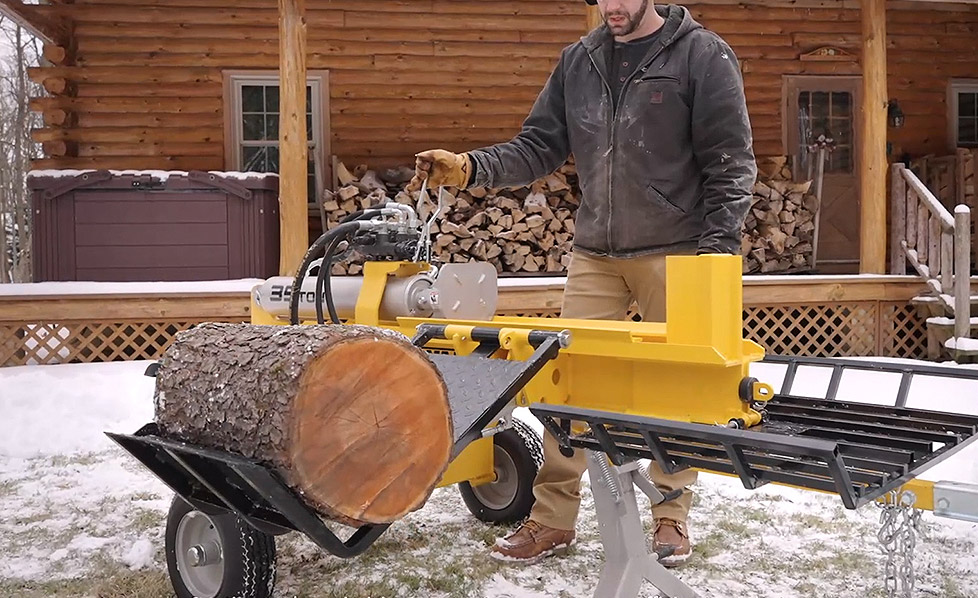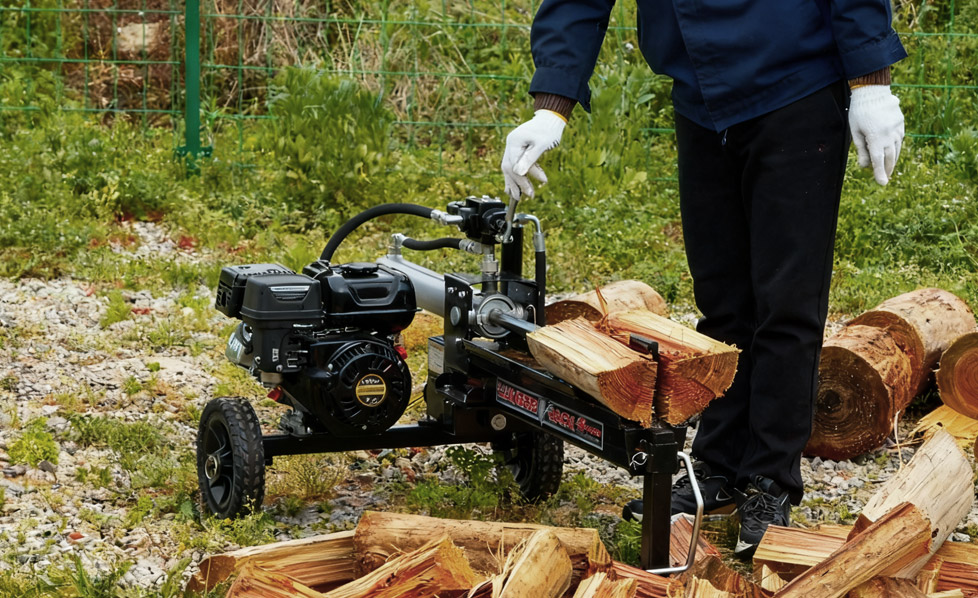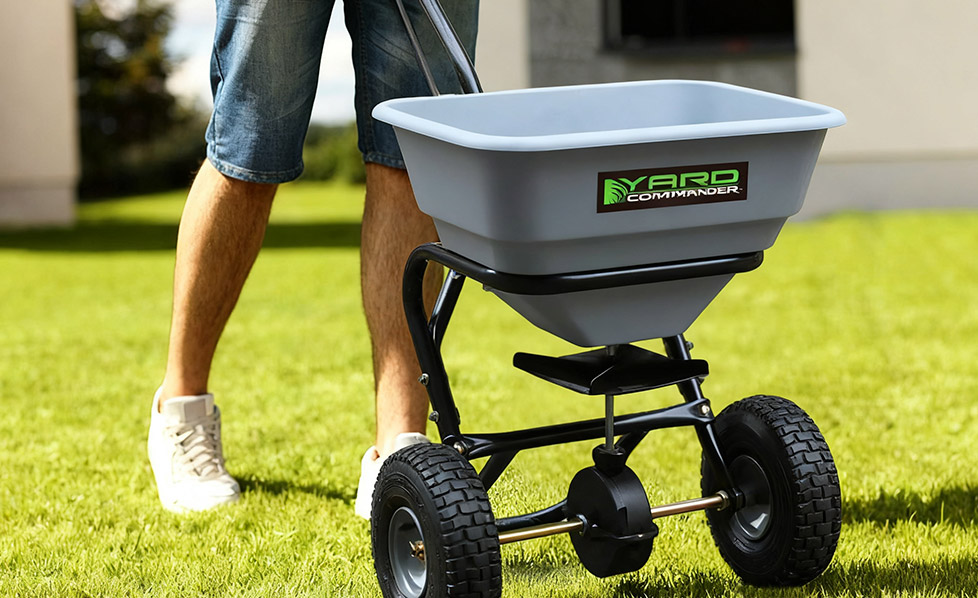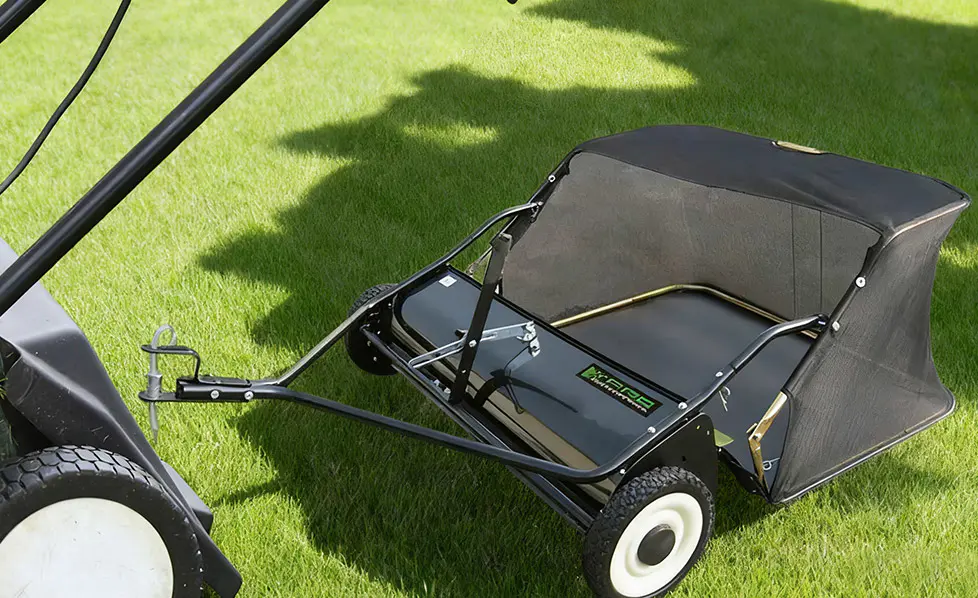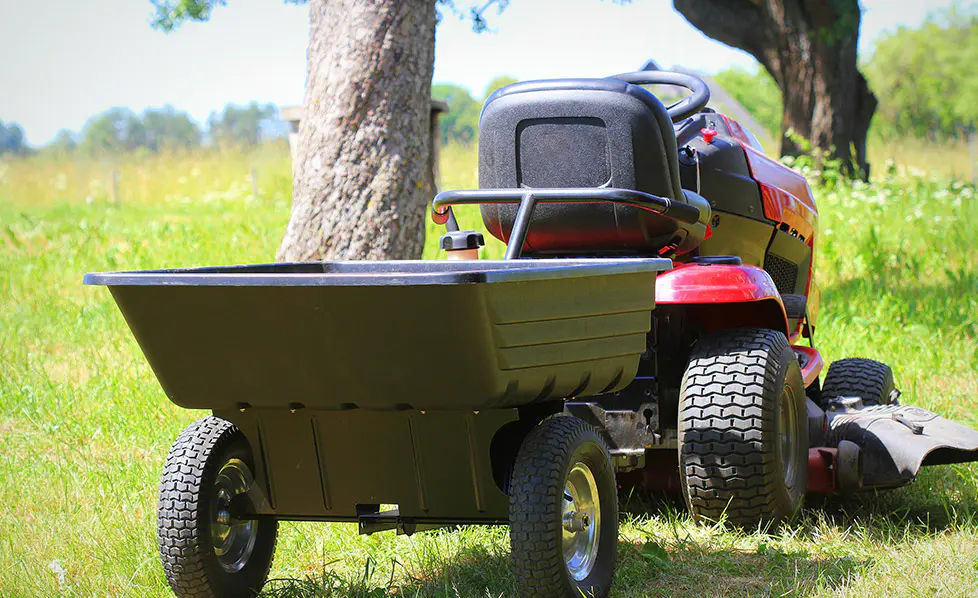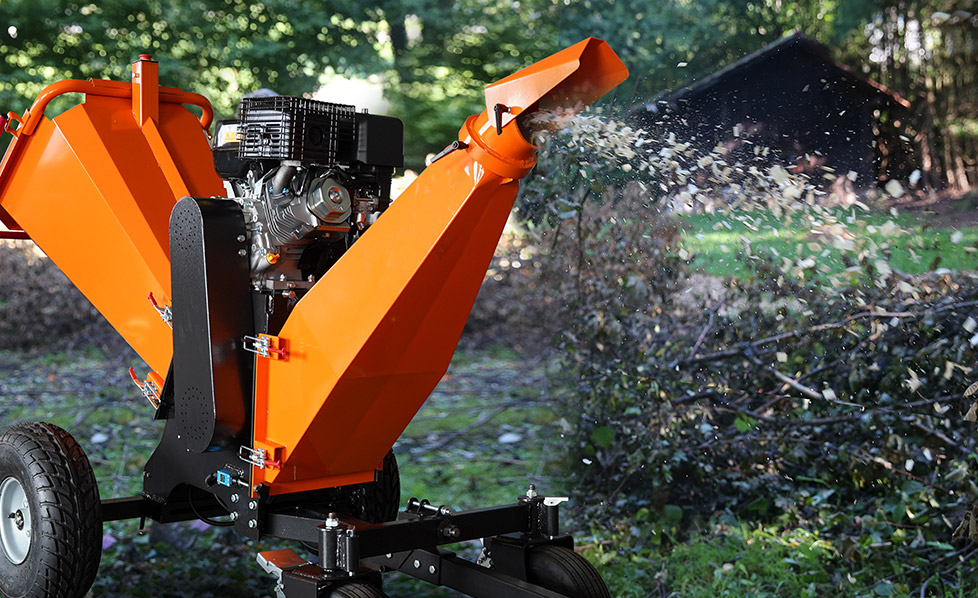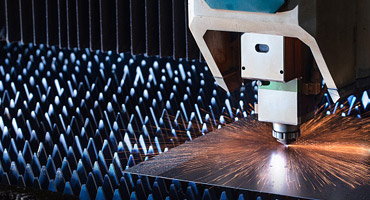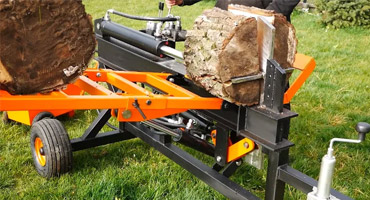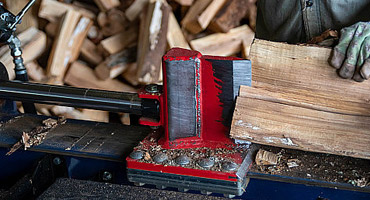 LANGUAGE
LANGUAGE


Web Menu
Product Search
Language
Exit Menu
We provide quality products and services to customers from all over the world.
Is a Manual Log Splitter the Right Tool for Your Homestead?
For those who heat their homes with wood or simply enjoy the ambiance of a fireplace, processing logs is an annual ritual. While powerful hydraulic splitters dominate the commercial market, there is a growing appreciation for tools that offer simplicity, affordability, and a direct connection to the work. The manual log splitter represents a category of tools that harness human power to break down rounds into manageable firewood. Unlike their motorized counterparts, these devices require no engine, no electricity, and no complex hydraulic systems.
Understanding the fundamental principle behind a manual log splitter is key to appreciating its utility. These tools operate on the basic concept of applying focused mechanical force to overcome the tensile strength of wood. Wood fibers are bound together longitudinally; splitting, as opposed to cutting, exploits the natural checks and cracks in the grain to separate a log along its weak points. The core components of most manual splitters include a cutting wedge and a means to drive that wedge into the log with significant force. This is a distinct advantage over swinging a maul, as the design channels energy more directly and reduces the margin for error, thereby enhancing both efficiency and safety for the operator.
The Mechanics and Primary Types of Manual Splitters
The term “manual log splitter” encompasses a few distinct designs, each with its own mechanical approach. The most common types are kinetic energy splitters, screw-type splitters, and lever-operated hydraulic splitters. Each design offers a different balance of effort, speed, and cost.
The kinetic energy, or swing-beam, style is perhaps the most recognizable. This design features a weighted beam attached to a pivot point. On one end of the beam is a cutting wedge, and the other end serves as a handle. The operator lifts the handle, raising the wedge end high into the air, and then swings it down with force onto a log positioned on the splitting base. The substantial mass of the beam, combined with the velocity generated by the swinging motion, drives the wedge through the wood. The key advantage of this design is its speed; it operates in a rapid, repetitive motion, allowing an experienced user to process a large quantity of wood quickly. It requires no setup beyond placing the log and relies purely on physics and human power.
Another historical design is the screw-type splitter. This device utilizes a large, pointed screw that is driven into the log. The screw is typically powered by a manual crank or, in some older models, connected to the driveshaft of a tractor or other power take-off (PTO) system. As the screw rotates and bites into the wood, it pulls the log down against a stationary wedge, effectively splitting it. It is crucial to note that this design has fallen out of favor due to significant safety concerns. The rotating screw can grab clothing or gloves with extreme force, posing a serious risk of injury, and is generally not recommended for modern use.
A less common but effective design is the manual hydraulic log splitter. This device looks like a small, horizontal version of a standard hydraulic splitter but is operated by a hand pump. The operator places a log on the beam, then works a lever back and forth to build hydraulic pressure. This pressure forces a ram against the log, pushing it into a stationary wedge. While this method is very powerful and can handle tough, knotty rounds that other manual splitters might struggle with, it is also the slowest option. The process of building sufficient pressure through repeated pump strokes requires considerable time and physical exertion.
The following table provides a concise comparison of the primary manual splitter types:
| Type | Mechanism | Pros | Cons |
|---|---|---|---|
| Kinetic (Swing-Beam) | A weighted beam with a wedge is swung down onto the log. | Fast operation, no setup, good for medium-sized straight-grained wood. | Can be tiring, less effective on very large or knotty rounds. |
| Screw-Type | A rotating screw bores into the log, forcing it against a wedge. | Can be very effective if powered by a PTO. | Extremely high safety risk; can cause severe entanglement injuries. |
| Manual Hydraulic | Hand pump builds hydraulic pressure to drive a ram. | High power, capable of splitting tough, large rounds. | Very slow operation, requires significant effort to pump. |
Evaluating the Advantages and inherent Limitations
Choosing any tool involves weighing its benefits against its drawbacks. The manual log splitter presents a compelling set of advantages that make it an ideal choice for many users. The most significant benefit is its independence from power sources. There are no cords to manage, no gasoline to mix or spill, and no engine to maintain. This makes it incredibly portable and ready to use anywhere, at any time. This portability is a major factor for those who cut wood in remote locations or simply wish to split wood on the spot in their woodlot rather than transporting heavy rounds to a central location.
Furthermore, the initial cost of a manual splitter is typically a fraction of the price of a powered hydraulic model. This low barrier to entry makes it an accessible option for homeowners, casual wood burners, and those on a tight budget. The design simplicity also translates to exceptional durability and longevity. With few moving parts and no complex mechanical systems to fail, a well-built manual log splitter can last for generations with minimal care, perhaps requiring only an occasional application of grease to a pivot point.
However, these advantages are coupled with inherent limitations. The most obvious limitation is the physical exertion required. Operating a kinetic splitter is a full-body workout, and pumping a hydraulic manual splitter is strenuous. It is not suitable for individuals with certain physical limitations or those who need to process very large volumes of wood quickly. The splitting capacity is also naturally constrained by human power. While a kinetic splitter can handle surprisingly large rounds, extremely dense, large-diameter, or knotty wood can prove too challenging, often requiring multiple strikes or being unsuitable altogether. For consistent processing of such difficult wood, a powered machine is a more practical solution.
Operational Techniques and Critical Safety Protocols
Using a manual log splitter effectively is a skill that improves with practice. Proper technique not only increases efficiency but is fundamentally tied to safety. The first step is always site preparation. The splitter must be placed on a stable, level surface to prevent it from rocking or tipping during operation. The area should be clear of tripping hazards like branches, rocks, or other debris. For a kinetic splitter, ensuring there is ample overhead clearance for the full arc of the beam is absolutely essential.
When positioning a log on the splitting base, it should be inspected for potential issues. Logs with severe twists or complex knots should be set aside, as they may not split cleanly and could cause the log to jump or the wedge to become stuck. Placing the log on the base with its most promising crack or weak point oriented toward the wedge will yield the best results. For a kinetic splitter, the operator should maintain a stable stance with feet shoulder-width apart. The swing should be a controlled, powerful motion using the core muscles, not just the arms. It is important to let the weight of the beam do the work; an overzealous swing can lead to a loss of control and accuracy.
Safety must be the paramount concern at all times. The operator must wear appropriate personal protective equipment (PPE) without exception. This includes safety glasses or a face shield to protect against flying wood chips, sturdy steel-toed boots to protect feet from dropped logs or the beam, and heavy-duty work gloves to improve grip and protect hands. Loose clothing, jewelry, or gloves that are too large should be avoided, as they could potentially get caught.
Perhaps the most critical safety rule is to keep hands and fingers clear of the splitting area at all times. Never attempt to hold a log in place while operating the splitter. If a log is too small to stand upright on its own, it should not be split with that machine or should be stabilized using a specially designed holding tool, never one’s hands. If a wedge becomes stuck in a log, the machine should be fully disengaged and the log carefully removed with the help of a pry bar, not by striking the stuck wedge with another tool. Finally, it is important to never use the equipment when overly tired, as fatigue significantly increases the risk of accidents.
Determining the Ideal User and Use Case
The manual log splitter is not a one-size-fits-all solution. It occupies a specific and valuable niche in the range of wood-processing tools. It is an excellent choice for the homeowner who processes a few cords of wood each season for a fireplace or wood stove. It is ideal for someone who values quiet, maintenance-free tools and does not mind the physical aspect of the work. For those living off-grid or in locations without easy access to electricity or fuel, its self-contained nature is a major benefit.
It is also a perfect tool for complementing a powered splitter. Many seasoned woodcutters will use a powerful hydraulic splitter for the bulk of their work, particularly the large, knotty rounds, but keep a kinetic manual log splitter on hand for quickly processing smaller rounds or for use at a remote cutting site where transporting a large machine is impractical. In this role, the manual log splitter saves time and effort by eliminating the need to constantly move the large splitter for small jobs.
Conversely, for a commercial operation that processes many cords of wood every day as a business, the slow, labor-intensive nature of a manual log splitter makes it an impractical primary tool. The throughput is simply too low to be economically viable. Similarly, for individuals with physical constraints that prevent them from engaging in strenuous repetitive lifting or pumping, a powered electric or gasoline log splitter would be a much safer and more comfortable alternative.
In conclusion, the manual log splitter is a testament to the elegance of simple, effective mechanical design. It offers a viable, rewarding method of processing firewood through direct human effort. Its benefits of cost, portability, and minimal maintenance are substantial, but they are balanced by its demands for physical labor and its limitations with certain types of wood. For the right user—the thoughtful homesteader, the casual wood burner, or the off-grid enthusiast—a manual log splitter is more than just a tool; it is a reliable and satisfying means of achieving self-sufficiency and enjoying the tangible fruits of one’s labor. By understanding its mechanics, respecting its requirements, and adhering to strict safety practices, one can safely and efficiently harness the power of a manual log splitter for years to come.
NEXT:What do I need to know before buying a manual log splitter?
Interested in cooperation or have questions?
- No. 158 Songhai Road, Huimin Town, Jiashan City, Zhejiang Province P.R. China
-
Tel:
0086 573 8464 3695
0086 573 8464 7353
- E-mail: [email protected]

 English
English